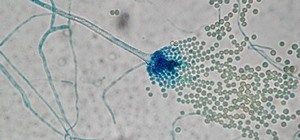An older man dies of Zika. A younger man who cares for him catches Zika — but doctors cannot pinpoint how the disease was transmitted. While proximity to the patient is sufficient explanation for the rest of us, for microbe hunters, it is a medical mystery. Why? Zika is not known to transmit from person-to-person casually.
The mysterious case of the Zika patient with no known risk factors was reported in the Centers for Disease Control and Prevention journal Emerging Infectious Diseases.
The heart of the mystery is how the Zika virus was transmitted from an original patient — called the "index patient," to another person. While Zika is primarily transmitted through the bite of a mosquito, it can also be transmitted during pregnancy, sex, through a blood transfusion or inadvertent lab exposure.
From January 2015 to July 2017, there have been 5,392 cases of symptomatic Zika virus reported in the US. Only 224 of those were transmitted through what were presumed to be local area mosquitoes. The rest were from travelers returning from affected areas, or other means including sexual transmission and lab exposure. Only one case has been identified of person-to-person-Zika — and that is our medical mystery. What's the story?
A Zika Case in Salt Lake City, Utah
In June 2016, a 73-year old man who had returned from Mexico three days earlier began to feel ill. After two days of symptoms, he sought medical care and was hospitalized three days later. His condition rapidly worsened, and he died three days later. Healthcare providers thought he had hemorrhagic shock syndrome associated with dengue fever. Dengue is related to Zika (they're both flaviviruses). Ultimately, testing revealed the man died of complications from the Zika virus, the level in his blood stream being "uncharacteristically high." This was the index patient.
The case was the first death from Zika confirmed in the US. Zika, throughout the world, is not typically considered a fatal infection. The CDC notes, "deaths due to Zika virus infection appear to be very rare at all ages."
About six days following the index patient's death, a 38-year old male relative became ill with Zika symptoms. This patient, the deceased man's son, tested positive for Zika within seven days of onset of symptoms but survived the infection. Known as "Patient A," this man had not had any typical means of transmission of the virus — he had not traveled outside of the country or had any other form of contact with the virus other than contact with the index patient. He had visited two homes of the deceased in Utah after the index patient's death, which might have exposed him to disease-carrying mosquitoes.
Besides documenting a current case history, finding how an infection spread is crucial in preventing outbreaks and adding to the knowledge of how the disease might be transmitted. During the Ebola outbreak in 2014, the CDC had guidelines for emergency management of suspected cases of Ebola. The basic rule of investigating a suspected outbreak of any kind is "identify, isolate, and inform."
In this case, health authorizes launched a large investigation to determine the mode of disease transmission between the older to the younger man.

Results of the investigation yielded the following information concerning the interaction of the index patient and patient A:
- Of 22 family members who visited the index patient, 19 of them met the clinical definition of "contact," and 15 of them lived with or visited him at his homes. Most of these people reported kissing him on the cheek or helping clean up after him, including cleaning up bodily fluids. After the older gentleman died, 12 mortuary workers had contact with his body. The wife of the index patient had the most contact with the index patient, assisting with his healthcare and hygiene. No one but Patient A contracted Zika.
- Of 98 healthcare workers identified as having come in contact with the index patient, 86 had direct contact, some with his blood, or body fluids, urine, stool, tears, or vomit. Most workers used gloves only, but 10 had no personal protective equipment, including eight who handled the index patient's sweat or tears. Of the healthcare workers tested, none were positive for Zika.
- Mosquitoes trapped at the three homes of the index patient, and Patient A, were not Aedes aegypti or A. albopictus, the most common mosquito type to carry Zika virus. While the mosquitoes were free of Zika, they were Culex species, and some female mosquitoes tested positive for West Nile virus — another flavivirus.
- Investigators surveyed 226 households within a perimeter of the homes where the index patient had stayed. From the 89 households that chose to participate, 218 participants answered questionnaires and provided blood or urine samples. All were negative for Zika and dengue virus antibodies.
Despite the exhaustive effort undertaken to find a known transmission path between these two men — none was found. While the study authors note the limitation of their study included being unable to identify all persons who treated or had contact with the index patient to find additional cases — researchers could never determine how the virus traveled between the two men.
The research notes that healthcare workers should be aware that person-to-person transmission of Zika, without sexual contact, could occur, a potentially new path for the Zika virus as it continues into North American populations.
Just updated your iPhone? You'll find new emoji, enhanced security, podcast transcripts, Apple Cash virtual numbers, and other useful features. There are even new additions hidden within Safari. Find out what's new and changed on your iPhone with the iOS 17.4 update.


























Be the First to Comment
Share Your Thoughts